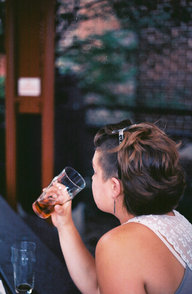Start 14-Day Trial Subscription
*No credit card required

Oktoberfest in Minnesota
In order to understand the well-established fondness that Minnesotans have for Oktoberfest - the party, the beer, the lederhosen - one must understand the overwhelming history of German immigrants in the Midwest. From about 1850 to 1890 Germans made up the largest group of immigrants in Minnesota, above Irish or Norwegian. These immigrants differed from those we often imagine - they were predominantly well-educated and often financially sound.
It only follows naturally that the Twin Cities and greater Minnesota saw an incredible influx of traditional German brewers, as well. The skill was relatively common back home, and it created a sustainable industry for many immigrant families.
Perhaps the best-known German style, enjoyed worldwide at this time of year, is Oktoberfest
Oktoberfest is a malt-forward beer, traditionally with no hop aroma. The beer is typically medium amber to nearly brown in color with red undertones. Vienna and Munich malt notes dominate with sweet bready characteristics and only a very mild hop component. The style covers very broad ground and has evolved to become slightly more dry and alcoholic in some regions over time.
Oktoberfest-style beers are closely related to the Vienna lager and may also be called Märzen, although in Germany these styles are a bit more distinct. Traditional German breweries sometimes even offer a modern Oktoberfest along with a more historic version, often labeled a Weisn or Märzen.
Many classic Oktoberfest examples are found throughout the Twin Cities, and American versions of the style vary greatly. Here are a few local choices to consider.
Freehouse, part of the Blue Plate restaurant group, is making one of my new favorites this fall. Their Oktoberfest displays depth of flavor without heaviness, and leans appropriately towards the malty side. My favorite element of this beer is the very bright mineral character that, in my experience, mimics the beer found in German-made Märzens.
For a twist on the classic, try Urban Growler's Mocktoberfest. Developed by head brewer Deb Loch, the Mocktoberfest is unusual in that it uses their house ale yeast. The result, when combined with classic Munich and Vienna malt, is great taste with lighter body. The beer was fermented cooler, as a Märzen would be, and as a result there is less flavor contribution from the yeast. It has much more restrained malt notes but remains balanced and very refreshing.
Those who skew a bit hoppy would be wise to seek out the Bauhaus Schwantoberfest. This family operation is unique in that it prides itself in lagers rather than ales, therefore it only makes sense for Bauhaus to capitalize on perhaps America’s favorite seasonal lager. Unlike other American Oktoberfests that add hops to the point of missing the mark on style, the Schwantoberfest remains fairly balanced with enhanced bitterness and a drier finish. The malts are displayed, but also kept in check.
Finally, if it’s the experience you’re after, party animals shouldn’t miss this Saturday’s Oktoberfest Celebration at Schell's in New Ulm. Experience the German culture within the city as well as on the brewery grounds. The celebration, which dates back to 1810, offers traditional German dance, bratwurst, and steins of one of the Midwest’s most authentic Märzen-style beers. The award winning recipe dates back to the brewery’s German roots and remains a favorite today.



